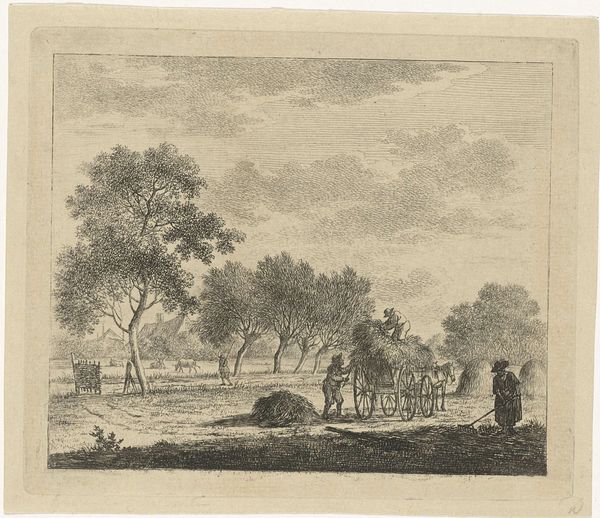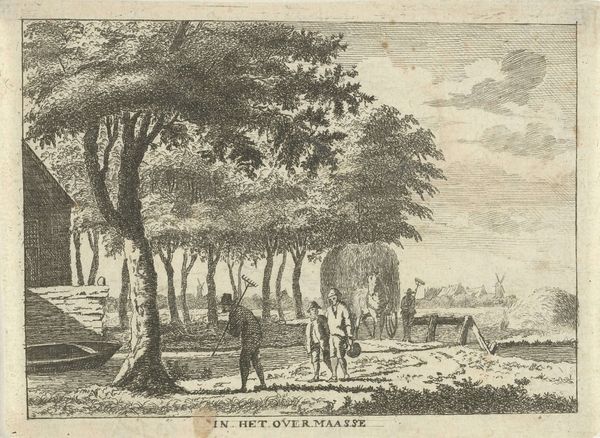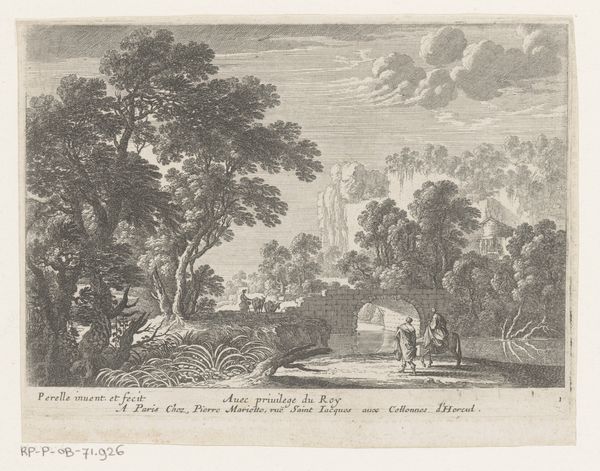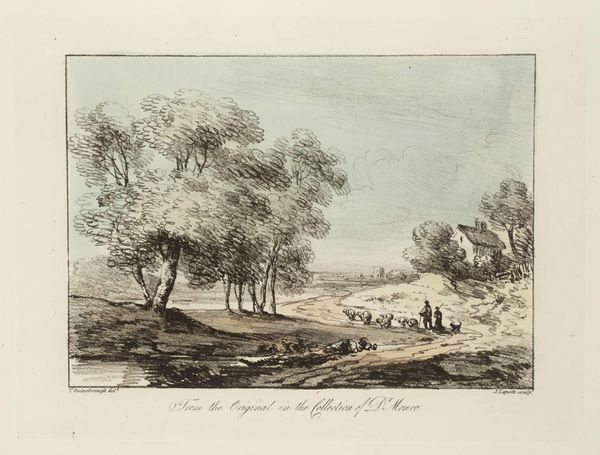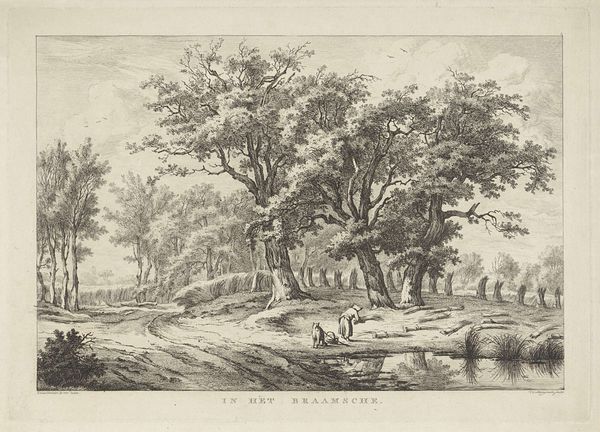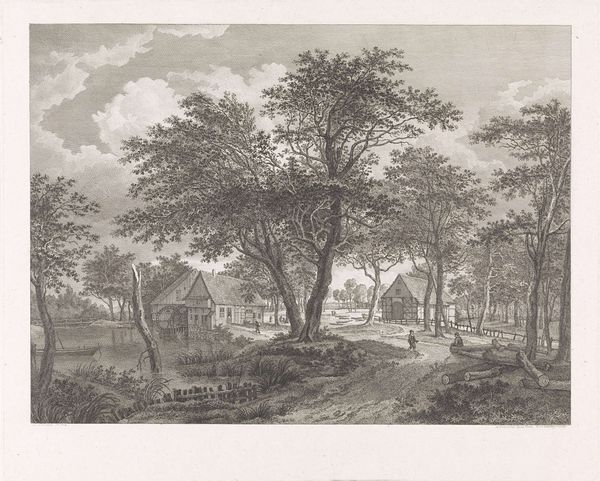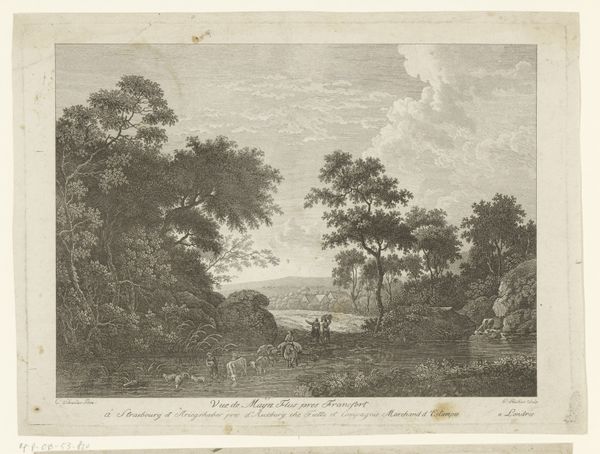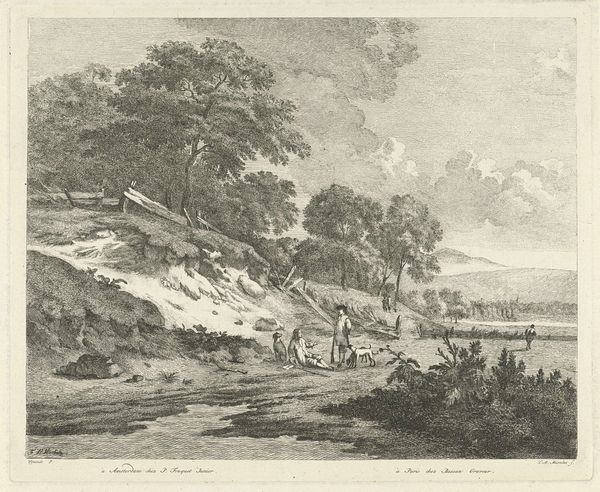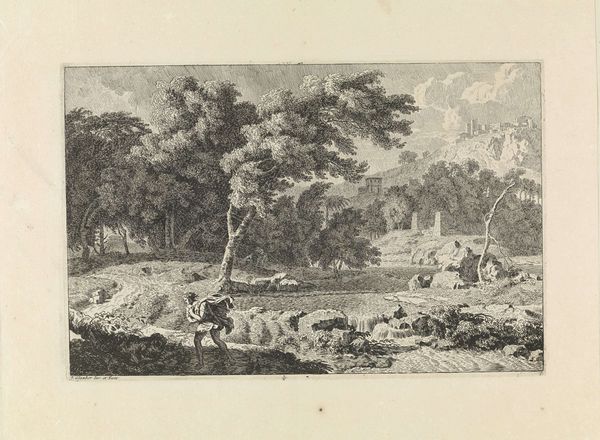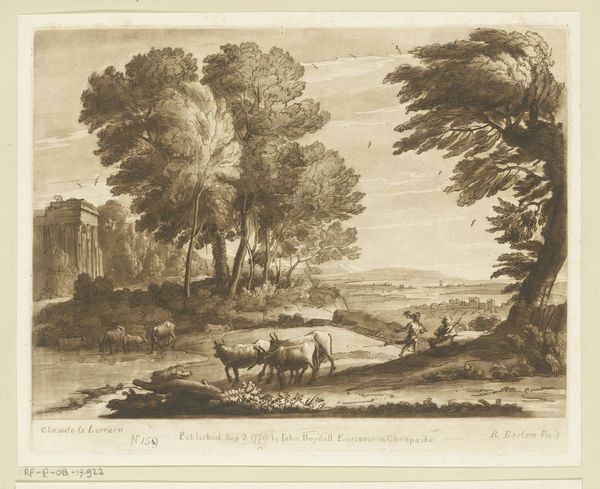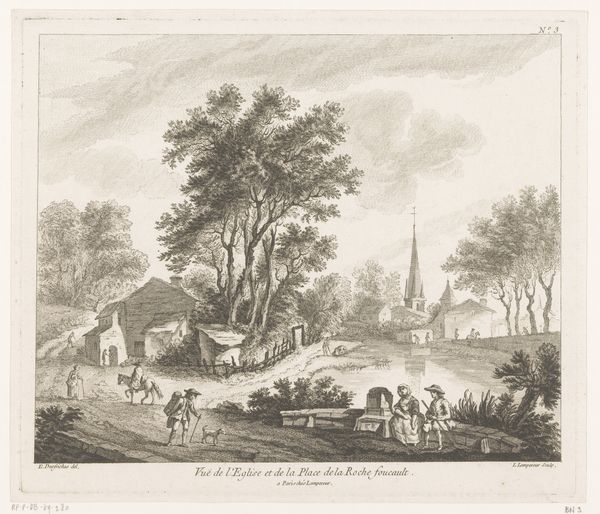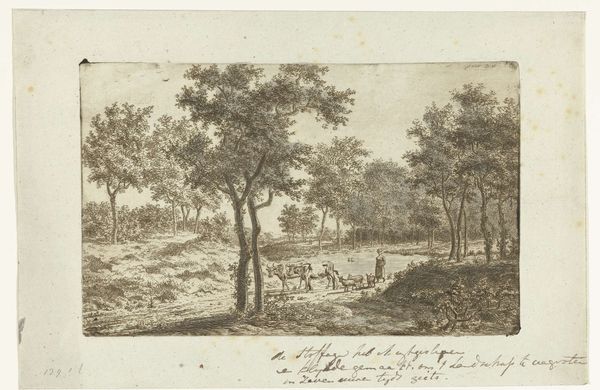
print, engraving
# print
#
landscape
#
northern-renaissance
#
engraving
#
realism
Dimensions: height 245 mm, width 336 mm
Copyright: Rijks Museum: Open Domain
This landscape near The Hague was made by Jacob Groenendijk, likely around the turn of the 19th century, using etching. The process starts with a metal plate, usually copper or zinc, covered with a waxy ground. The artist then draws through the ground with a needle, exposing the metal. The plate is then immersed in acid, which bites into the exposed lines, creating grooves. The longer the plate stays in the acid, the deeper the lines, influencing the darkness of the printed line. Look closely, and you’ll see how the etched lines create subtle gradations of tone and texture, suggesting the foliage of the trees, the play of light on the buildings, and the figures in the landscape. The relative ease of etching, as compared to engraving, allowed for a freer, more sketch-like quality. Prints like this one were a crucial means of circulating images, creating a shared visual culture. In appreciating this etching, we're not just admiring a scene; we're engaging with a specific technology of reproduction, and the social context it enabled.
Comments
No comments
Be the first to comment and join the conversation on the ultimate creative platform.

